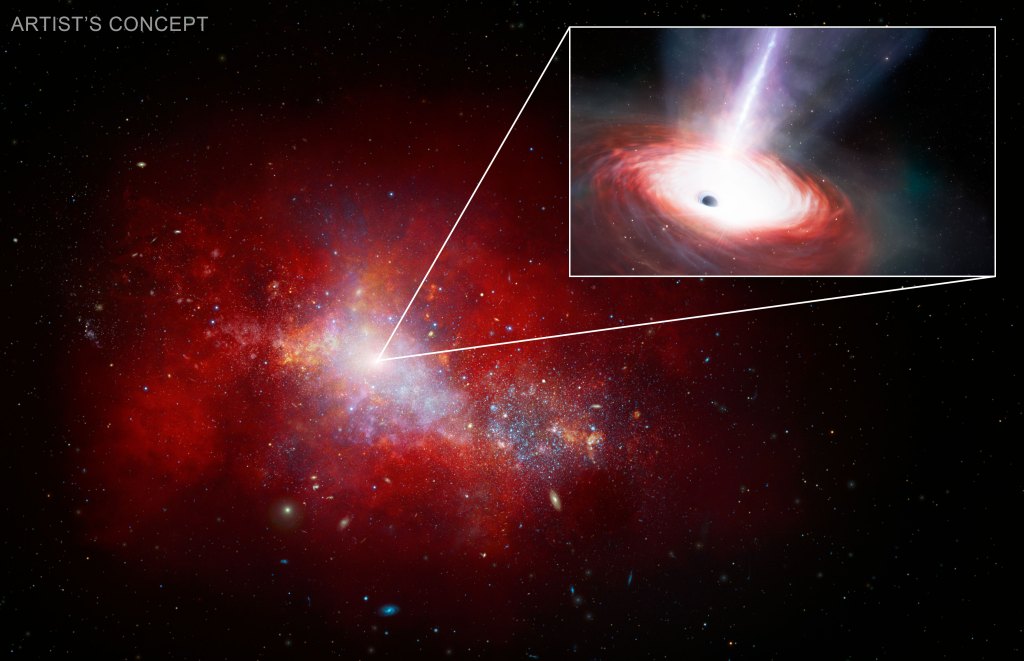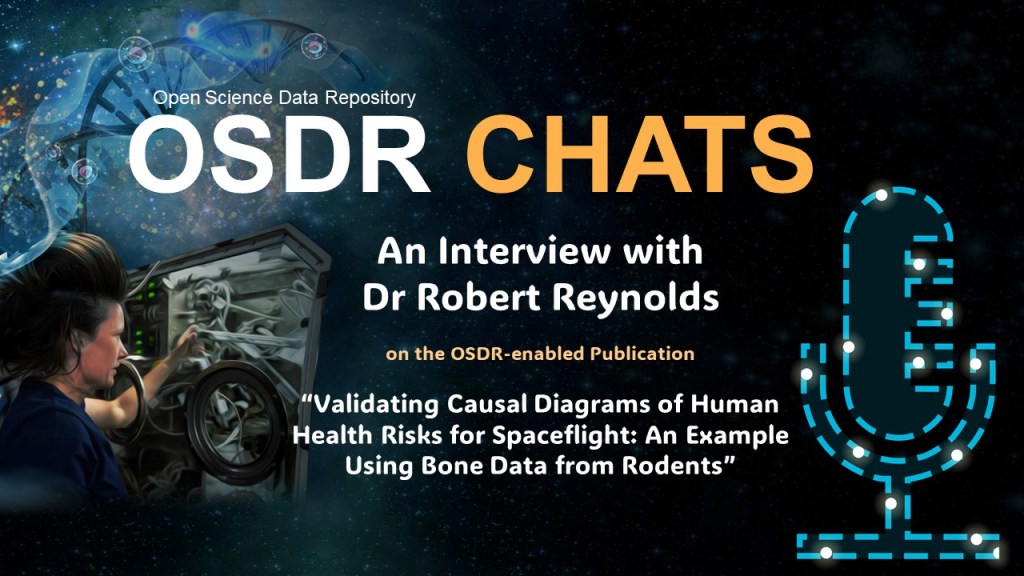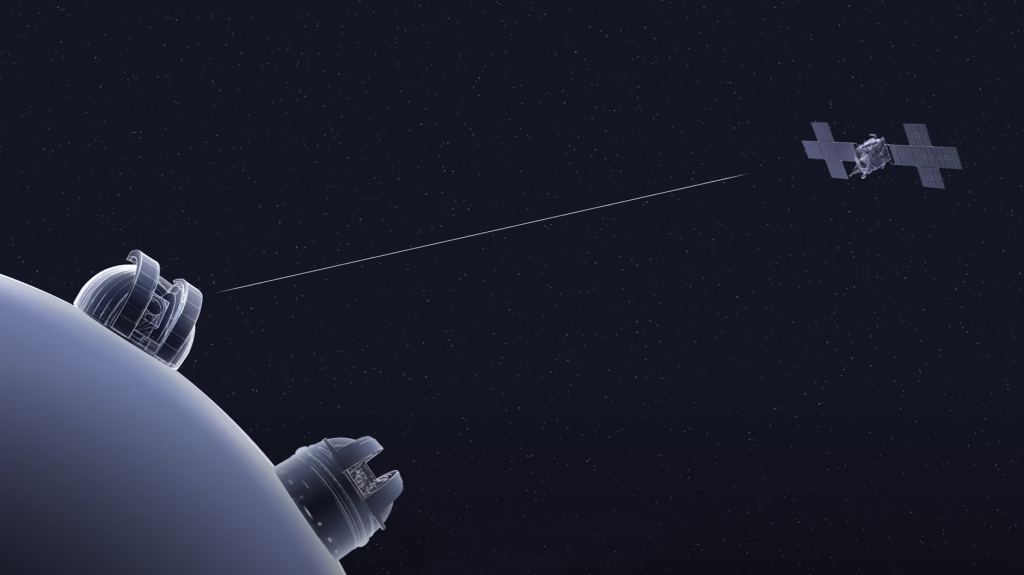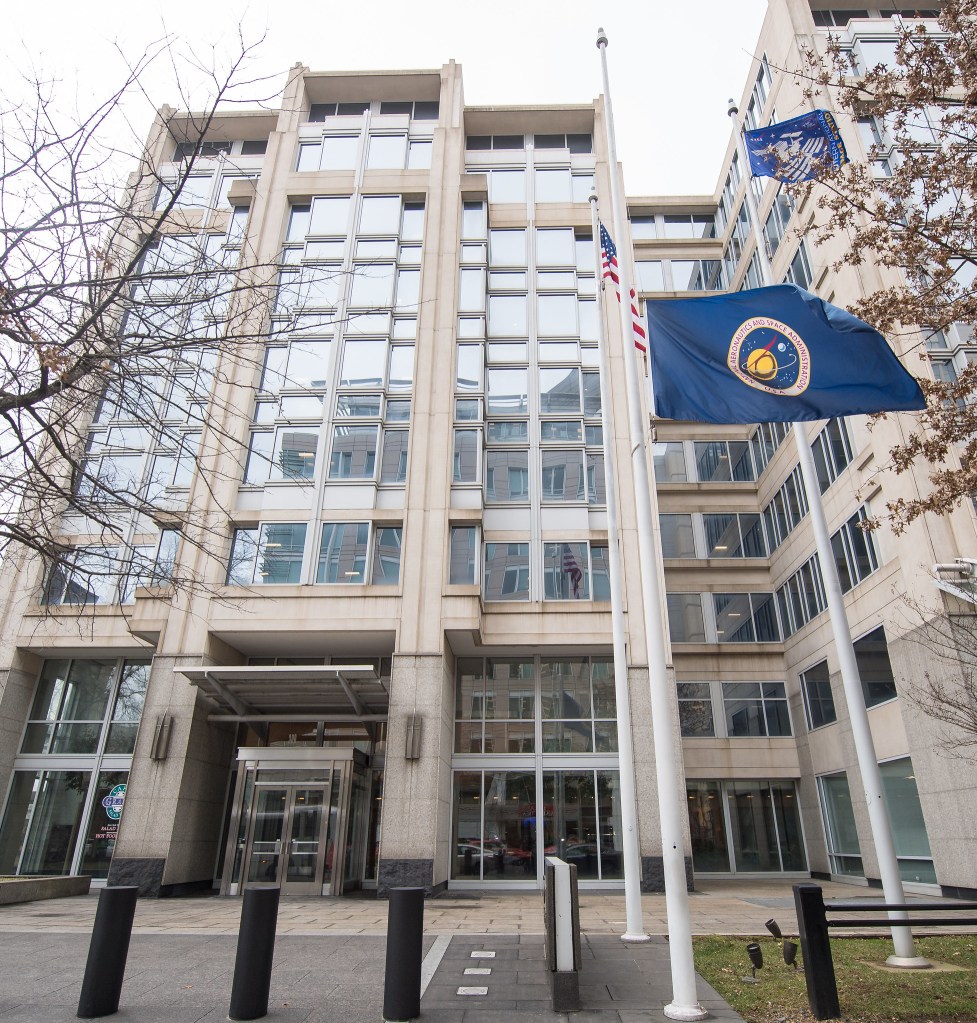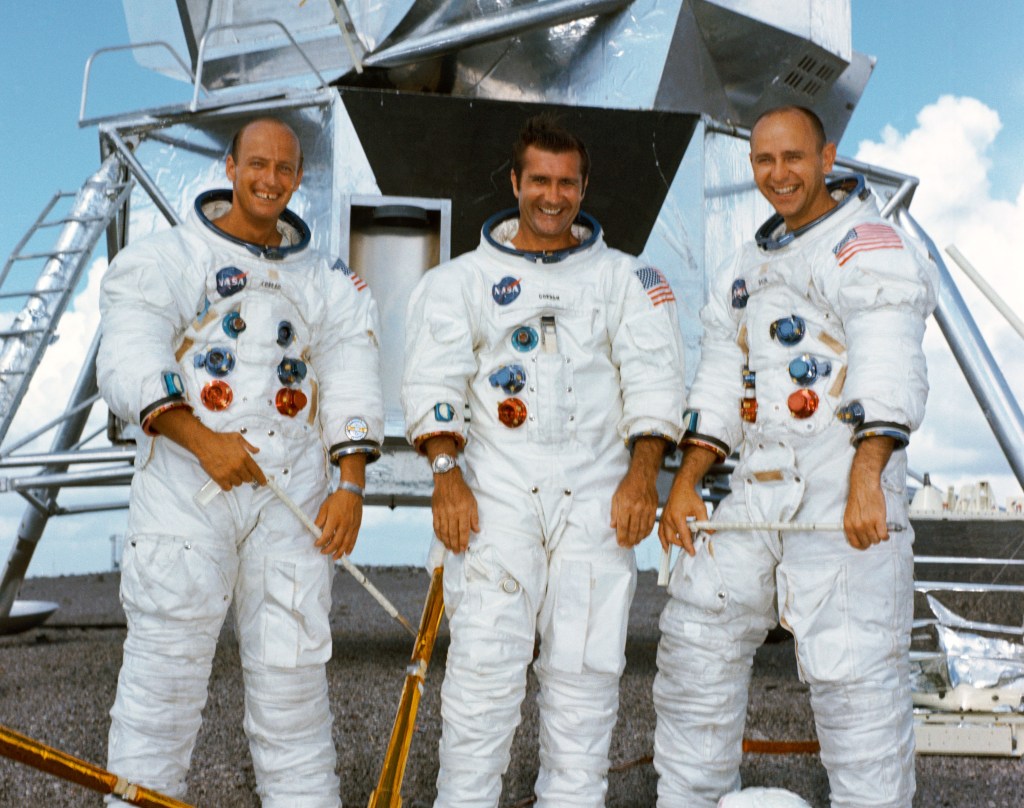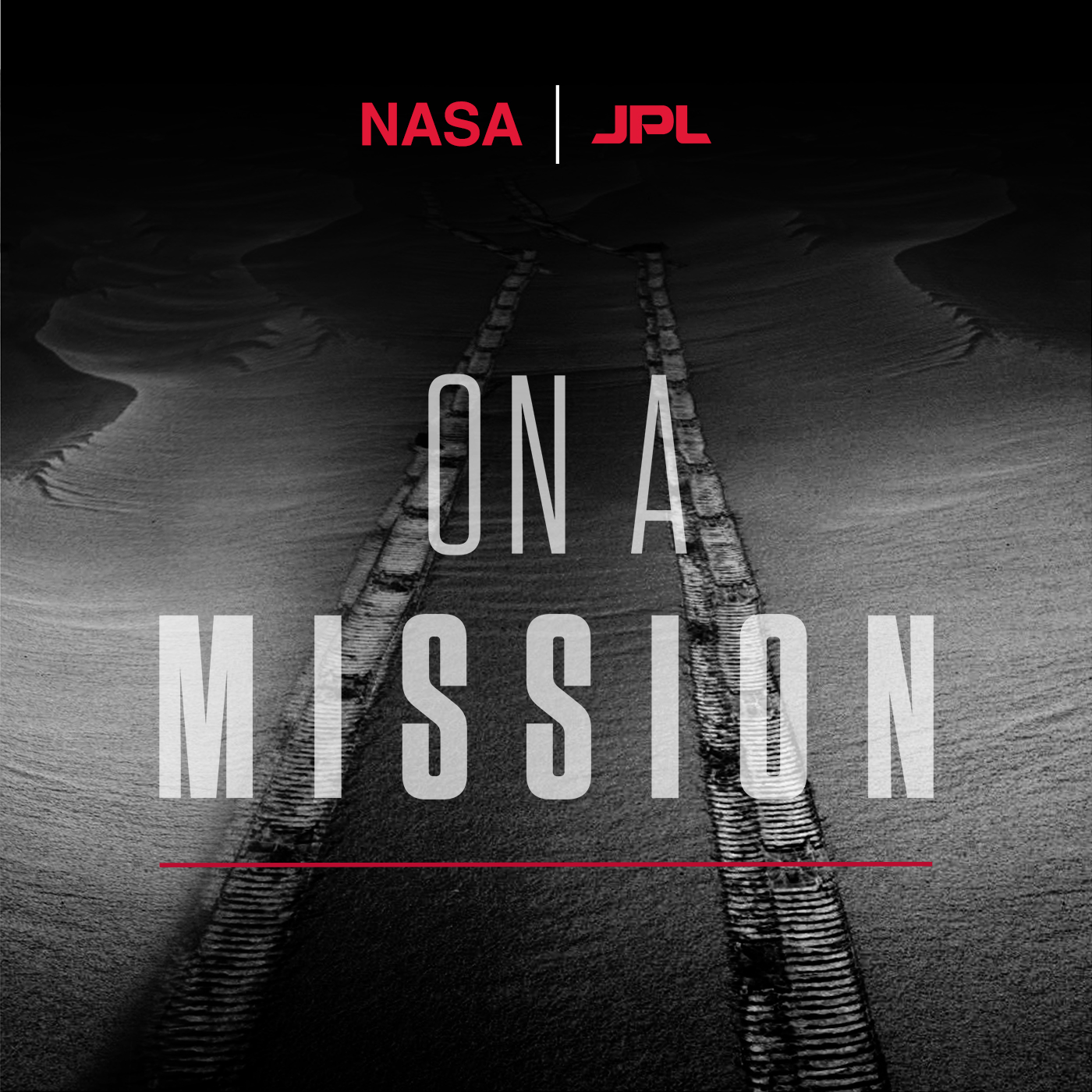
Transcript
(music)
Narrator: Our planet Earth is a child of the Sun. We sprang from the same interstellar cloud of gas and dust that created our parent star. This cloud was caught in a shockwave when a nearby star reached the end of its life and exploded.
(sound FX explosion)
Narrator: The supernova blast caused our birth cloud to spin and heat up, and most of the material in the cloud’s compressed center ignited into our Sun.
(sound FX solar ignition)
Narrator: The remaining disk of material swirling around the young Sun eventually formed the planets of our solar system. Our planet’s birth was savage, multiple crashes of particles that liquified from the violent heat of impact and then clung together, a molten sphere that grew ever larger with each new collision.
(sound FX collisions)
[0:57] Narrator: After millions of years, the storm of particles subsided as the last fragments of the birth cloud dispersed.
Our planet cooled, but it did not rest. Lighter elements like silica floated and formed a thin crust, while heavy elements like iron sunk to form the core. Beneath the surface today, the fury of Earth’s origin rages on. Radioactive elements in the rocks, like uranium, thorium and potassium, stoke this inner fire.
Our planet doesn’t shine like our Mother Sun, but volcanic cracks and vents in Earth’s surface reveal the red-hot turmoil deep within. Volcanoes are not mere windows into our planet; they are expressions of the ancient dance of destruction and creation that made us.
Since the beginning, volcanic lava has molded the landscape, just as their gases have shaped the atmosphere. Volcanoes even helped create the ocean, after water vapor they exhaled gathered into clouds, and rain began to fall.
(sound FX rain, lightning and thunder)
[2:05] Narrator: The largest volcanic eruption in recorded human history happened just over 200 years ago. The 1815 eruption of Mount Tambora killed tens of thousands of people in Indonesia, and ash clouds from the volcano spread around the world, lowering global temperatures. In North America and Europe, 1816 was known as “the year without a summer.” In Switzerland, a group of friends dealt with the cold, dreary weather by dreaming up ghost stories, including Mary Shelly, who began writing her classic horror tale, “Frankenstein.”
1931 Frankenstein movie clip:“Frankenstein: a man of science, who sought to create a man after his own image, without reckoning upon God. It’s one of the strangest tales ever told. It deals with the two great mysteries of creation: life and death.”
[3:01] Narrator: Volcanoes star as angry Gods in mythological folklore around the world. And they play less-than-divine roles in other legendary stories. For instance, the eruption of Santorini in 1650 BC has been blamed for the fall of the Minoan Civilization, the Biblical plagues of Egypt, and the destruction of the fabled city of Atlantis. Such volcanic tales are difficult to prove, but they reflect the awesome power of volcanoes and their out-sized influence on the history of life.
In fact, some scientists think volcanoes gave rise to life on Earth, when a strange brew of chemicals percolating through volcanic vents on the ocean floor around 4 billion years ago may have created the first living cells.
1931 Frankenstein movie clip:“It’s alive! It’s alive! It’s alive! It’s alive!”
(intro music)
[4:30] Narrator: Welcome to “On a Mission,” a podcast of NASA’s Jet Propulsion Laboratory. I’m Leslie Mullen, and in this third season, we’re traveling to the ends of the Earth with scientists who explore different aspects of our planet. This is episode 2: Genesis.
(music: Lord of the Rings movie – Mordor theme)
Narrator: JPL volcanologist Rosaly Lopes loves to go where others fear to tread.
Rosaly Lopes:Volcanic eruptions are so beautiful, at least some of them are. Seeing the power of the Earth — those explosions and lava flows — it stirs something in me. I just live for that.
When you see a lava fountain, some people call it a fire fountain, you see this red lava whooshing up, and particularly at night, it’s just totally awesome. And lava lakes are one of my favorites, and to stand on the edge of a lava lake, it’s like standing at the gates of hell, and that has a certain fascination. (laughs) The heat, the noise. It’s very much like Mordor in “Lord of the Rings.”
(Lord of the Rings movie sound FX, Entering Mordor)
[5:50] Narrator: Rosaly has visited active volcanoes all over the world, and has faced many dangerous situations.
Rosaly Lopes: I have had to dodge “bombs” sometimes. (laughs)
Narrator:Volcanic bombs are lumps of molten rock that shoot out of volcanoes like flaming missiles.
Rosaly Lopes:If a volcano is having an explosion that it’s spewing out bombs, you have to watch where the bombs are and where they’re going to land. And sometimes a volcano might be active but quiet, and you get too close. You get within the range of bombs and suddenly there is an explosion, and what you shouldn’t do is run blindly. Just watch where the bombs are coming. And then, you know, move to the side if you think that they’re coming towards you.
(sound FX volcanic bomb)
[6:43] Rosaly Lopes:In Vanuatu, an island called Tanna has, to my mind, the best tourist volcano, called Yasur, because at least every few minutes there is an explosion. And I was watching those explosions with some friends. And suddenly there was a more violent one and I actually felt the shockwave. And I told my friends, “Watch for the bomb, don’t run.” And in fact there was quite a large bomb that landed about 20 meters away from us. And it was quite large, nearly a meter across. And it was actually very useful because even though it’s a tropical island, it was at night and it was getting kind of cold and it had rained a lot, so our clothes were wet. So we were able to use the bomb like a campfire. (laughs) You know, even when it cooled a bit, we put our jackets on top so that they would dry.
[7:42] Narrator: The Vanuatu islands are in the South Pacific, to the east of northern Australia. They are part of the Ring of Fire, a volcanic region that encircles the Pacific Ocean. Many of the volcanoes in the Ring of Fire are highly explosive, and therefore dangerous for the people that live near them.
Rosaly Lopes:They can cause a lot of trouble. Sometimes lava flows destroy houses, and explosive eruptions can kill a lot of people. Volcanic gases can also cause some trouble, but generally you need to be close — unless you are exposed for a long period of time, maybe you have asthma, something like that. But if you are traipsing around on volcanoes like I do, then you have to be careful and carry a gas mask.
Narrator:For her volcano adventures, in addition to a gas mask, Rosaly brings along a few other items.
[8:38] Rosaly Lopes:I’ll take a thermal camera. A hardhat is also useful, or a motorcycle helmet. It’s not going to protect you from the big bombs, but it protects you from some of the smaller ones. And sturdy boots. Gloves, because volcanic lava can be very sharp. So if you fall and you put your hand down to break your fall, you might really tear up your hand. Think about it a little bit like you are on a motorcycle. I mean, I don’t carry a leather jacket on volcanoes, but it’s that kind of thing. You have to protect your skin. And depending where you are, some places are cold, some places are hot. I’ve been to volcanoes on every continent, including Antarctica, so you need the appropriate gear for each volcano.
Narrator:Even with the right gear, you have to know how to read the volcano for signs of trouble.
[9:34] Rosaly Lopes:When you are on an active volcano, you’ve got to be prepared. You’ve got to know about specific dangers, and what you should do should something happen. So get to know that volcano. And also gauge your level of risk. What do you accept as a risk?
For example, I did visit White Island a few years ago. I went with a regular tourist group. In fact, the volcanologists in New Zealand are only allowed to go there when they absolutely have to go to check an instrument. But they told me, you can go there as a tourist; you can take a boat trip. And I thought that was very odd, because usually, it’s the other way around: the volcanologists are allowed to go whenever they want, but the tourists are not.
We knew it was dangerous, but I knew we would only be there for like an hour. So you have to gauge what’s the probability of you being caught in that kind of explosion.
[10:36] Narrator:Rosaly was fortunate on her visit to New Zealand’s volcanic White Island. The volcano was less well-behaved on December 9, 2019, when it erupted suddenly, killing several tourists.
CBC-Radio Canada, White Island news report:
Reporter:Mere minutes before the violent eruption, White Island’s crater was churning and active. The minutes after, a 12,000-meter plume captured by New Zealand’s volcano monitoring agency.
Ken Gledhill, GNS Science: “It was almost like a throat-clearing kind of eruption. On the scheme of things, for volcanic eruptions, it was not large, but if you’re close to that, it was not good.”
[11:11] Rosaly Lopes:It was a sudden explosion that put out a lot of gas and ash, and even a pyroclastic surge — that’s a flow of hot gas and ash.
An explosion like that… well, let’s say that you know that that’s a possibility. I always look for an escape route. I look for somewhere that, maybe behind a big boulder, where I could get out of the way, perhaps of a pyroclastic flow, or how fast do you have to run? How far can you run? And it’s worth remembering that there were 47 people on the island when it exploded. 20 were killed. Most of the others were injured, some severely injured. And I believe that the two people who were not really injured were close to the shore, and they actually jumped in the water and they were able to hold their breath until the pyroclastic surge passed over them.
(sound FX pyroclastic surge)
[12:18] Rosaly Lopes:But one of the people who was in the group closest to the explosion was a young man who just ran to the shore. And he was badly burned, but he survived. It seems that many other people actually just turned around and started taking pictures. And this is not the time to take pictures. In general, if you’re talking about volcanic bombs, running is not really a good idea. But if you’re talking about a really major explosion with a lot of ash and gas, then get out of there as fast as you can.
Narrator:Some of the other risks Rosaly has encountered didn’t come from a volcano.
Rosaly Lopes:Some of the dangers are actually human. Volcanoes are located in all kinds of amazing places. In some of them, the people might not be too friendly. I have encountered a variety of unfriendly locals, from a pack of unfriendly dogs on Mount Etna, to a farmer who came around with a gun. He wasn’t so much unfriendly as more concerned about what we were doing.
One of the things I recommend to everyone is hire a good local guide so that you become really familiar with the local series of dangers. And when I went to Erta Ale volcano in Ethiopia, the local guides are all from one of the Afar tribes, and all the males carry AK 47s. So you have this 16-year-old guiding you with an AK 47.
[13:57] Narrator:Local guides don’t always guarantee a smooth journey, as she discovered during one spontaneous trip in Costa Rica.
Rosaly Lopes:
I was going to a meeting in the capital, in San Jose, and I wasn’t really expecting to visit Arenal volcano. But a colleague of mine, who was at the meeting, hired a local guide to see Arenal, which is a very active volcano. So we met with the guide and he said, “Oh yes, no problem. We leave here in the early evening and we drive to the volcano and then you’re back late at night.” So we went, and it had rained quite a bit. There was a river he had tried to get across, but the river had swollen up because of the rains. And then the vehicle stopped. And we all had to get out and push. And everything was covered in clouds, we couldn’t see where the volcano was, what was happening exactly. And then suddenly there was this “boom” explosion.
(sound FX boom)
[15:00] Rosaly Lopes:And one of my colleagues looked very frightened. He wasn’t a volcanologist. And he said to me, “Uh, was that thunder, or the volcano?” And I said, “Oh, I think it was thunder.” You know, just tried to reassure him. So, eventually we were able to get out of the river, get the vehicle restarted, and drive to another location. And then the clouds parted. Then we saw the volcano beautifully.
Narrator:Rosaly’s been to so many volcanoes, she wrote a book, “The Volcano Adventure Guide,” to help others follow in her footsteps.
Rosaly Lopes:In “The Volcano Adventure Guide,” I chose to only write about volcanoes that were accessible to most people. I thought, well, it’s no point writing about some volcanoes that you really need technical climbing skills, or you need to be very young and fit to be able to get to.
I have written another book about my visit to Erebus in Antarctica. And that’s not a volcano that everyone can go to. It’s certainly not a tourist destination. But it is one of the most fascinating places I have been to.
[16:08] You are on this ice landscape and then you climb to the top of the volcano and the ice is no longer there because it’s so warm. And you have this lava lake at the bottom of this crater. And it just feels so powerful in that totally desolate landscape. Of course, if the weather is bad, you can’t go up to the volcano, but the weather was beautiful when I went.
I actually hate the cold. I was born in Brazil, so I really like hot weather. But I just bundled up, and to go to a volcano like Erebus, it was worth it.
(music: “Girl from Ipanema,” 1964, Astrud Gilberto with Stan Getz)
Tall and tan and young and lovely
The girl from Ipanema goes walking
And when she passes, each one she passes
Goes “a-a-a-h”
[17:04] Rosaly Lopes:I grew up in Rio de Janeiro, right by the famous Ipanema Beach. It really is a big city, but I grew up doing a lot of water sports. You know body surfing, swimming, and being right at the beach.
(“Girl from Ipanema,” continued)
But each day as she walks to the sea
She looks straight ahead, not at me…
Rosaly Lopes:I wanted to be an astronaut since I was very little. I was really fascinated by the Apollo program and used to follow it. I thought that going into space was the most exciting thing ever. But I realized, probably by the time I was six or seven, that there were some problems. I was female and at that time, there had only been one female astronaut. And I was Brazilian, and all the astronauts were Russian or American. And I had terrible eyesight. You know, very nearsighted. So I realized that being an astronaut probably wasn’t going to work out.
But then, I saw an article in the paper about Apollo 13. And in that article, they had a picture of a female, Frances Northcutt, known as Poppy. And she was at Mission Control. She, in fact, worked calculating trajectories to bring the Apollo astronauts back. And this newspaper talked about her — she was the only female there, and, oh, it’s rumored she dates some of the astronauts, and she was young and pretty, and had been a runner-up for Miss Austin. And I was just totally fascinated by her. I thought if she can do this, I can do it too. And I decided to become an astronomer and work for NASA.
[18:56] Narrator:Nearly 50 years later, Rosaly was interviewed by the Brazilian Consulate in Houston, Texas — the same city where NASA’s Apollo Program was based. After she explained what a role model Poppy Northcutt had been for her, they helped track down Poppy’s phone number.
Rosaly Lopes:Poppy left the space program and ended up becoming an attorney. So she totally changed careers. But we made contact by phone, and met a short while after that, and then I invited her to JPL, and it was great. And she says that is one of the most inspiring things she ever heard, that she inspired this little girl in Brazil who ended up working for NASA.
Narrator:Just as Poppy Northcutt had shifted her career direction, Rosaly’s goal of becoming a NASA astronomer changed while she was in college in England.
[19:49] Rosaly Lopes: A course that I took in my last year of the astronomy degree was a course in planetary geology. And I enjoyed that so much that I asked the professor if I could do a PhD with him. He was really the only person who did planetary geology in England. And he was a volcanologist by training. And he said, in order to understand volcanoes on other planets, you need to understand them on Earth. So you need to start going to volcanoes on Earth. So he started taking me on his field trips to help out. And on my first field trip to Mount Etna, Mount Etna erupted. And it was quite spectacular, and I was totally hooked.
(music)
[20:37] Narrator: All the rocky planets in the solar system – Mercury, Venus, Earth and Mars – have volcanoes. Some of the moons that orbit the gas giant planets also have volcanoes. For instance, Io, a moon of Jupiter that’s a little larger than our Moon, has more active volcanoes than any other place in the solar system.
Rosaly Lopes:When we look at volcanoes on Earth, we are looking at the subset of what volcanoes are and what they can do. So it’s really by looking at volcanoes on other worlds that we can expand our models. For example, volcanoes on Io have huge lava flows of the types that we haven’t seen on Earth for many millions of years. So it’s a way of looking at the early Earth.
[21:26] Narrator:When Rosaly came to JPL, she studied Io’s volcanoes during the Galileo mission to the Jupiter system. During the Cassini mission to Saturn, she studied ice volcanoes on the moons Titan and Enceladus.
Rosaly Lopes:When we looked at the icy moons of the outer solar system, like Enceladus, we found cryo-volcanoes, and that’s a type of volcano where the magma is not molten rock like on Earth and Io and the majority of other planets. The magma on those icy moons is actually water, because they have an ice crust, but oceans of liquid water under the ice crust. So if that material comes up to the surface, that’s volcanism. But if we hadn’t looked at these icy moons, we wouldn’t have known that cryo-volcanism was even a process that existed.
[22:23] Narrator:Although cryo-volcanism doesn’t exist on Earth, Rosaly can explore other aspects of Earth’s volcanism, like lava flows and lava lakes, that provide clues to what we see on other worlds like Io and Mars.
Rosaly Lopes:You know, I’m lucky because the basaltic volcanoes that have lava flows and lava lakes are also some of the safest to be around.
Narrator:Considering their highly destructive nature, it seems unusual to consider volcanoes “safe”. But many communities around the world live near active volcanoes, and have learned to cope with their outbursts.
Rosaly Lopes:When lava flows have threatened communities in the past, people have tried to divert the lava flow. And in fact, the first example that I know of was in Mount Etna in Sicily, in 1669.
(music)
[23:14] Rosaly Lopes:So the people from one town saw that the lava flow was heading towards their town. So the men went to the lava flow with pickaxes, and they tried to break out a channel on the side of the lava flow so that lava would then, like a river, be diverted and go in another direction. And that seemed to be successful for a little bit. But then the lava was going towards another town, and then the guys from that town didn’t like that. So they had to stop doing it. (laughs)
But the most successful example happened in Iceland in 1973, and that was on the island of Heimaey. They had an old volcano on the island, and then one night, a new volcano started erupting. And the Icelanders are really used to living with volcanoes. So they didn’t panic. They got very organized. The fishing fleet, luckily, was back in the port, and they packed up everybody on the boats and carried everybody to the mainland.
[24:24] But then, they noticed this lava flow was coming down towards the harbor, and this island lived from fishing. And if the harbor was destroyed, that would have been the end of their livelihood. So they decided to battle the lava flow. And they did it with bulldozers, diverting the flow, and also by spraying cold seawater onto parts of the flow to cool it off, so that it would run in another direction. And even many young people from the mainland actually came to Heimaey and volunteered to help battle the flow. And in the end, they were very successful.
I visited there a few years ago. And my Icelandic guide told me that the interior of that crater is still warm, and young people from the town often use it for parties.
(music: “Volcano Man” – from the Netflix movie, “Eurovision Song Contest: The Story of Fire Saga”)
“Volcano Man”
“He’s got my melting heart”
“Volcanic Protector Man”
“A timeless hero…”
[25:31] Narrator: Volcanic eruptions are ranked on a scale called the Volcano Explosivity Index, or V.E.I. Relatively gentle lava eruptions, like those in Iceland and Hawaii, rank between 0 and 1 on the scale. The scale tops out at 8, but VEIs of 6 or higher are considered rare. However, the danger posed by a volcano comes from more than its explosive power.
Rosaly Lopes:Really the hazard of a volcano, it depends on where it is in terms of civilization and people living. The volcanoes in Alaska and the Aleutian Islands are very dangerous, but not so many people live there. Volcanoes in the Cascades, you know, Mount Hood, Mount Adams, Rainier… in fact, Rainier is considered the most hazardous volcano in the United States, because Rainier has glaciers at the top. And even if you didn’t have a huge eruption, the heat of the magma and then the ash coming could melt that ice and then cause mud flows to come down, and they could come down towards Tacoma and Seattle. In fact, parts of those cities are built on old mud flow deposits.
[26:51] Narrator:America awoke to the dangers of the Cascade volcanoes 40 years ago, when Mount Saint Helens erupted.
Mt St Helens CBS news report:
Dan Rather: Good Evening. Three days after the eruption of Mount Saint Helens in southwest Washington State, imponderables dust the air like volcanic ash… One geologist said today, “There is no record in geology in the last 4,000 years of anything like this happening before. The tremendous lateral blast is unprecedented…”
[27:19] Rosaly Lopes:St. Helens really sticks out in our memory because a number of people died. The volcano gave plenty of warning, and people had been evacuated. Unfortunately, some refused to be evacuated. And also, what the models didn’t predict is that the main blast was a lateral blast rather than an upward blast. It was the lateral blast that caught people by surprise, including a volcanologist who unfortunately died. They thought he was in a reasonably safe location in an observation post on top of a ridge. But the blast went right towards him.
USGS documentary: Mount Saint Helens, May 18, 1980:
Announcer: It was a Sunday morning, 8:32 a.m. “Vancouver, Vancouver, This is it!” was the excited call on the radio from David A. Johnston to his colleagues. Within minutes, the colossal eruption had caused hundreds of millions of dollars in damage, and 57 lives were lost, included Dave Johnston. For two months prior to that eruption, scientists for the US Geological Survey, and the University of Washington’s Pacific Northwest Seismologic Network, had been closely monitoring the volcano…”
[28:40] Rosaly Lopes:Mount St. Helens taught us a lot about explosive eruptions. But the whole science has advanced a lot. Volcanoes near inhabited areas are very well monitored.
In general, when magma is moving towards the surface, it inflates the volcano slightly — it’s like a balloon — so you can measure that tilt or that inflation. The seismic activity also tells you that something is happening. Now we have even observations from space, in addition to seismic network and tilt meters.
Narrator:Space satellites can see if volcanoes are stirring and shifting the land, and also sniff out gases that volcanoes leak into the atmosphere. Airplanes or drones carrying instruments like radar also keep tabs on different volcanoes, and provide finer-scale measurements than the satellites do. Monitoring stations on some of the more active volcanoes provide continuous updates. All this data helps scientists better understand volcano behavior in general, but each volcano is unique.
[29:50] Rosaly Lopes:They don’t all behave the same. In fact, even the volcanoes that are of the same type, they’ve slightly different personalities. So that’s why we have experts on particular volcanoes.
Narrator: One volcano that has a larger-than-life presence in the American psyche is the Yellowstone Caldera in Wyoming. You’ll sometimes see sensational news stories about how it could destroy the whole continent in an enormous “super volcano” eruption. The VEI of such an eruption would be an 8, the very top of that scale of power.
There’s also a story, frequently shared online, that NASA plans to cool down Yellowstone to prevent it from exploding. The cited report was a scientist’s thought exercise, an academic “what if” scenario, and NASA has no plans to do any such thing. In fact, most volcanologists say Yellowstone isn’t even considered a major threat.
[30:45] Rosaly Lopes:Yellowstone had much, much bigger eruptions in the past. It has had “super eruptions,” if you like to use that term, but we’re talking hundreds of thousands or more years ago. But it has not been active for a very long time, and the magma chamber is largely solid. So it’s very well monitored, you know, we can’t totally discount the possibility, because it’s still a volcano that’s considered active. But even if it had an eruption, it doesn’t mean that the eruption would be as large as the ones before.
Narrator:The United States Geological Survey provides monthly updates about Yellowstone’s status. For more active volcanoes in the Cascades, Alaska and Hawai’i, their updates are issued weekly or even daily.
The USGS also has teamed with NASA on different volcano missions, such as a multi-instrument campaign in 2017 to study how Hawai’i’s Mauna Loa and Kīlauea volcanoes impact local air quality and vegetation, and to better understand volcanic processes and hazards.
(music)
[31:59] Narrator: Although volcanoes can be dangerous to us, they help keep Earth in balance. They are the ultimate recycler, transporting material buried deep inside the planet back up to the surface.
Rosaly Lopes:Volcanoes build land — even today you can still see land, like on the Big Island of Hawaii, being formed by new lava flows. Volcanic ash fertilizes soil. So, volcanoes have a very good side. And they are an essential process, one of the major planetary processes for, in fact, every solid body of the solar system. Volcanoes are how a planet loses heat.
Narrator:Volcanoes grow quiet as a rocky planet’s interior cools down from its hot molten origins. On the smaller, colder planet Mars, for instance, the many volcanoes that dot its surface are now extinct remnants of a bygone age. As Earth’s interior slowly cools over billions of years, our volcanoes also will eventually become more subdued.
[33:07] Rosaly Lopes:The large eruptions are not likely to happen as much. I’m talking in planetary geologic timescales — and those are very, very long timescales. So we should continue to monitor our volcanoes and understand them, the best we can.
(music)
Narrator: If you like this podcast, please subscribe, rate us on your podcast platform, and share us on social media. We’re “On a Mission,” a podcast of NASA’s Jet Propulsion Laboratory.
[run time = 33:47]






